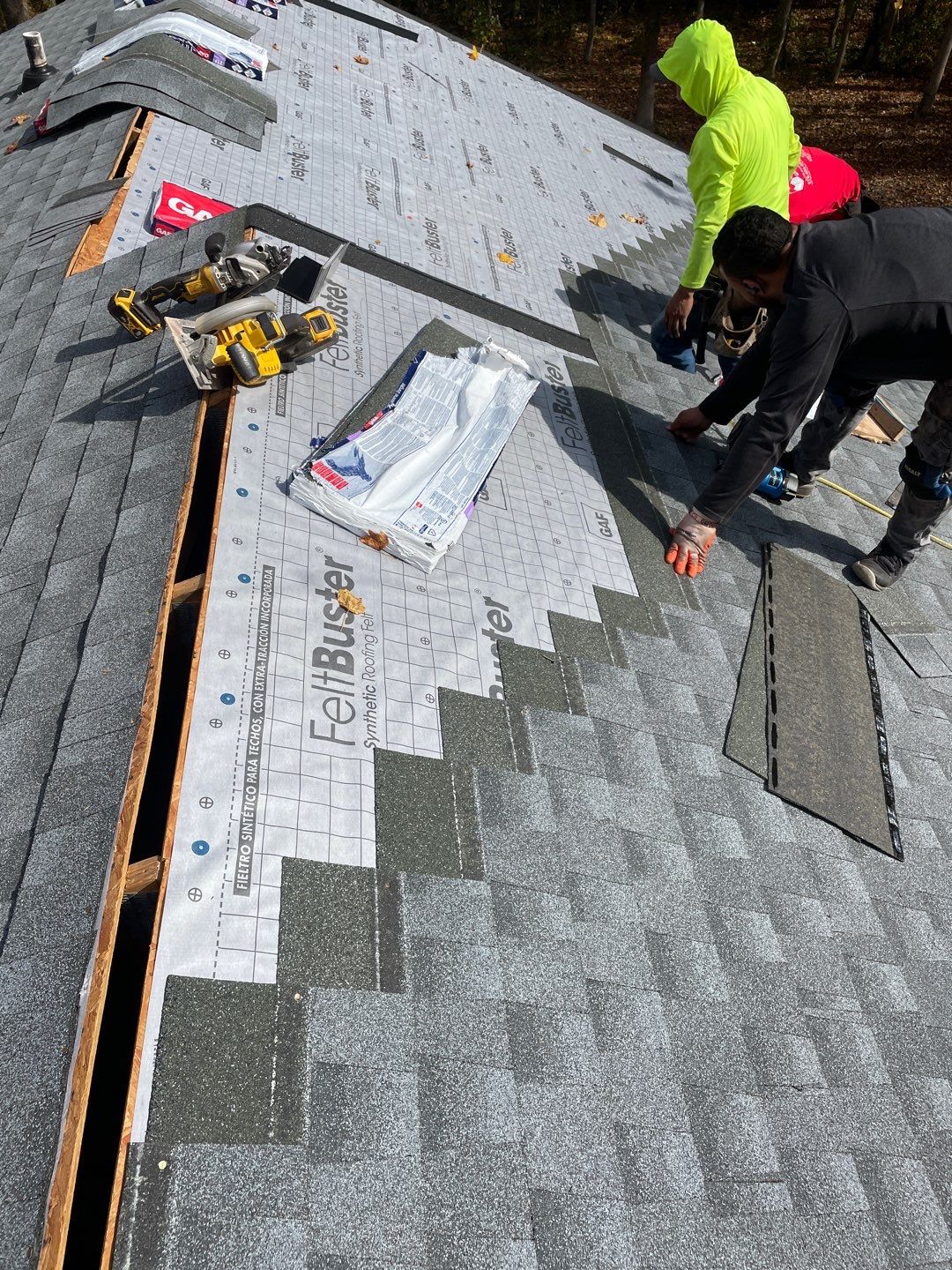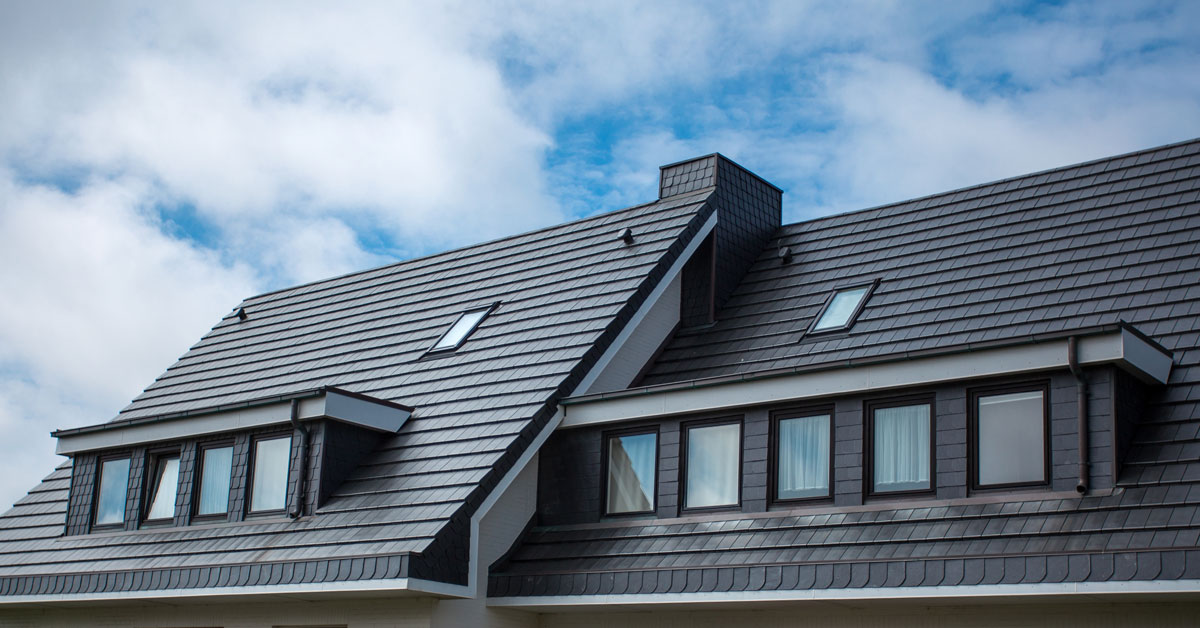Ideal Practices for Ensuring Appropriate Roofing Air Flow
A balanced intake and exhaust air vent proportion, commonly 1:300, plays an essential role, with intake vents ideally positioned at the lower side of the roofing system for cool air access and exhaust vents at the height for cozy air departure. Keeping insulation away from vents is important to prevent air flow constraint.
Understand Air Flow Basics
Correctly understanding air flow essentials is crucial for ensuring the durability and effectiveness of roof. Efficient air flow alleviates moisture accumulation and temperature extremes in the attic, both of which can lead to substantial architectural damage in time. A well-ventilated roof helps in protecting against typical problems such as mold and mildew development, wood rot, and ice dams, which can jeopardize the stability of the roof products and the underlying frameworks.
The key objective of air flow is to help with the movement of air, allowing for a constant exchange between the interior and exterior environments. This balance is achieved with a combination of intake and exhaust vents that collaborate to maintain optimum airflow. Intake vents, generally located along the soffits or eaves, allow fresh air to enter the attic room room, while exhaust vents, typically located at or near the roofing system ridge, allow warm, damp air to leave.
Trick factors affecting the effectiveness of roof air flow include correct placement, adequate sizing, and ensuring that both intake and exhaust vents are unhampered. Routine evaluation and maintenance are important to identify possible obstructions, damages, or ineffectiveness in the air flow system, therefore safeguarding the roof covering's performance and longevity.
Sorts Of Roof Covering Vents
Roofing system vents play a crucial role in keeping efficient attic room air flow and, by extension, the general health of the roof covering system. Various kinds of roofing vents are offered, each with special advantages tailored to particular roof covering demands. Ridge vents, for example, are mounted along the roof's peak, enabling cozy, humid air to escape from the attic. They supply constant ventilation and mix flawlessly with the roofline, making them both reliable and cosmetically pleasing.

Soffit vents are mounted under the eaves and operate in tandem with roof covering vents to make sure a well balanced consumption and exhaust system. By permitting cooler air to get in from below, soffit vents assist in the expulsion of warm air with top vents. Gable vents, located on the exterior walls of the attic room, deal an additional reliable service, especially in homes with saddleback roofs.
Examine Your Present Ventilation

Following, take into consideration the age and problem of your roof materials and air flow parts. Older systems might not abide by present building regulations or might have weakened in time, minimizing their efficiency. Conduct an extensive assessment to identify any type of indicators of wear and tear, such as corrosion, damages, or voids that might compromise the system's efficiency.
Additionally, determine the attic temperature level and humidity levels. Heats and humidity can suggest insufficient air flow - roofing companies in gainesville florida. Make use of a hygrometer and thermometer to acquire accurate analyses, contrasting them with outside conditions. Persistent discrepancies suggest possible problems that need attending to.
Installment Best Practices
Efficient setup of roof covering ventilation systems is vital for guaranteeing ideal efficiency and longevity. Proper installment starts with recognizing the details air flow needs of the roofing and the structure it covers. This entails calculating the proper ratio of intake to exhaust vents, commonly adhering to the 1:300 regulation, which states one square foot of air flow for each 300 square feet of attic room floor area.

Intake vents should be set up at the roofing system's reduced side, typically in the soffits, to permit trendy air to get in. Exhaust vents, on the other Check Out Your URL hand, need to be mounted near or at the roof covering's peak to facilitate the leave of warm, wet air.
Seal all vent connections carefully to avoid air leakages and potential water seepage. Usage high-quality materials and follow producer guidelines to make sure durability and effectiveness. Additionally, integrating ridge vents with baffles can substantially improve airflow performance by preventing wind-driven rain and snow from getting in the attic.
Eventually, specific installment of roof air flow systems mitigates potential issues such as mold development, ice dams, and structural damage, making sure the roofing's honesty and the building's total health.
Normal Upkeep Tips
Consistency in upkeep techniques is basic to making sure the lasting performance of roof covering ventilation systems. Routine assessments are crucial, ideally carried out biannually-- in the springtime and loss. Throughout these inspections, guarantee that vents are totally free of particles, nests, and various other obstructions that can restrain airflow. Examine for any signs of dampness accumulation or mold and mildew, as address these can show incorrect air flow or leaks (gainesville fl roofing companies).
Make use of a soft brush or a vacuum cleaner to get rid of dust and debris from consumption and exhaust vents. Be cautious not to damage the vent displays or louvers during the procedure.
Appropriate insulation is similarly vital. Make certain that attic room insulation does not obstruct the vents, as this can seriously restrict airflow. Reposition or replace it to maintain a reliable obstacle. if any insulation has changed or cleared up.
Last but not least, replace any kind of damaged or missing out on official source elements immediately. Broken vents, fractured shingles, or worn-out blinking can all add to poor air flow and needs to be addressed without hold-up. Routine maintenance makes certain that the roof ventilation system works optimally, thereby prolonging the lifespan of the roofing system itself.
Verdict
Ensuring correct roof air flow is paramount for maintaining the efficiency and longevity of a roof. Adherence to the 1:300 consumption and exhaust vent ratio, paired with the critical positioning of vents, is vital. Normal biannual inspections, particles cleaning, and ensuring insulation does not block airflow are crucial methods. Applying these ideal practices will foster a well-ventilated roof system, thus minimizing prospective issues related to moisture build-up and extreme warm, eventually lengthening the roofing system's lifespan.
A well balanced consumption and exhaust vent proportion, frequently 1:300, plays a crucial duty, with intake vents ideally put at the reduced edge of the roofing for cool air access and exhaust vents at the peak for warm air departure. Consumption vents, commonly situated along the soffits or eaves, permit fresh air to get in the attic space, while exhaust vents, frequently located at or near the roofing ridge, enable warm, humid air to run away.
Soffit vents are installed under the eaves and job in tandem with roofing system vents to guarantee a well balanced consumption and exhaust system. By enabling cooler air to get in from below, soffit vents promote the expulsion of hot air with top vents. Adherence to the 1:300 intake and exhaust air vent ratio, combined with the critical positioning of vents, is essential.